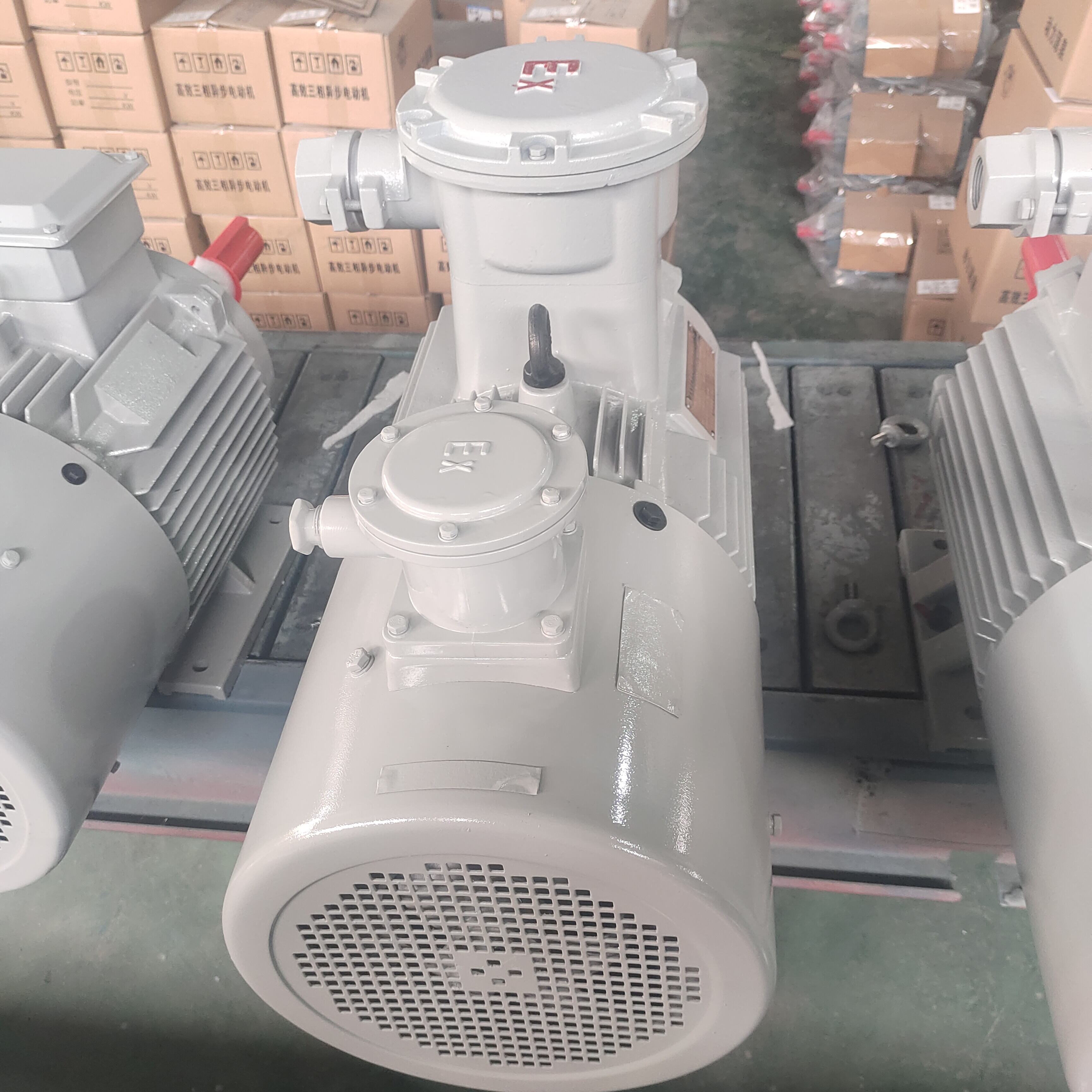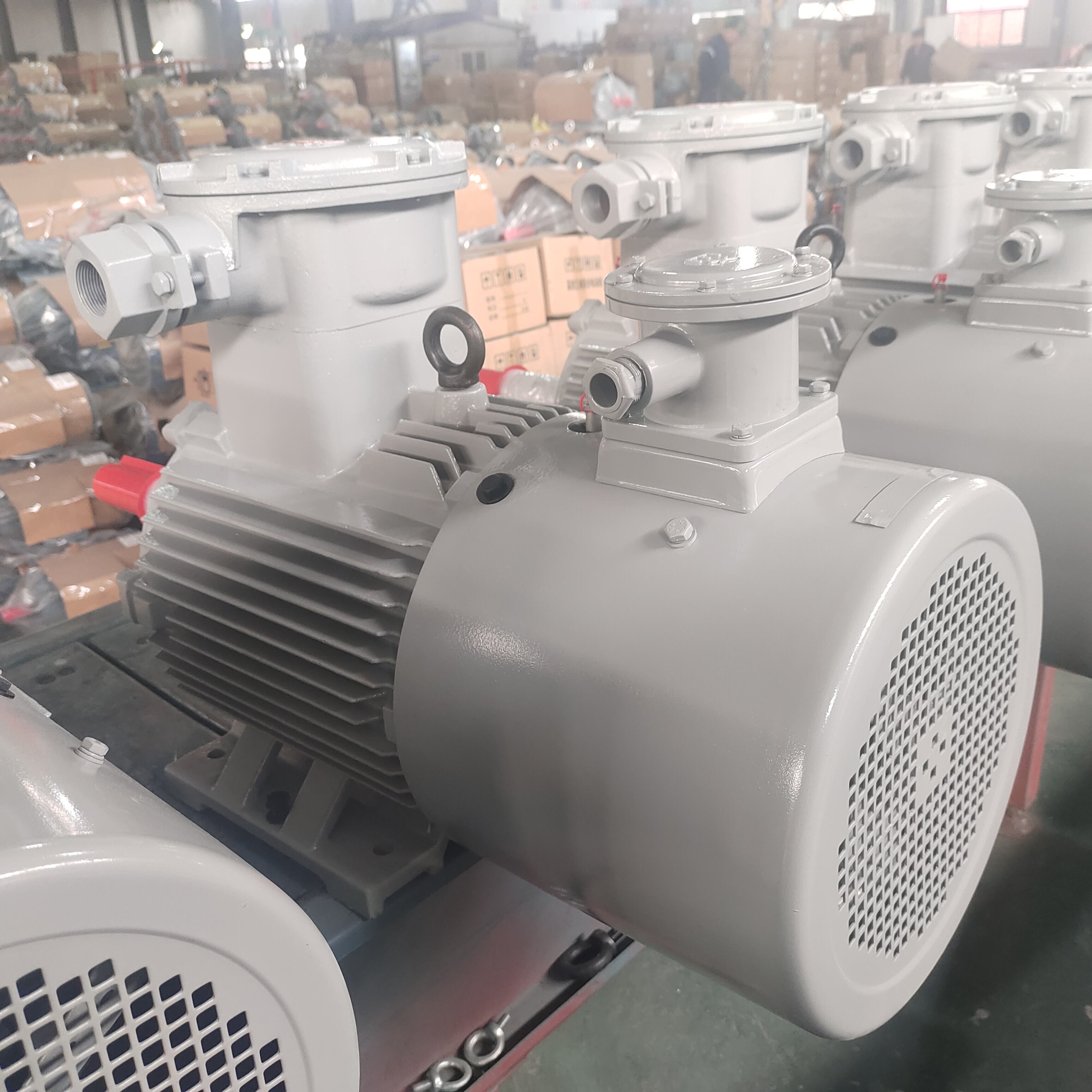Variable Frequency Motors: A Solution for Fluctuating Load Conditions
Introduction to Variable Frequency Motors
Modern industries rely on electric motors to power everything from conveyor belts and pumps to compressors and fans. Traditionally, motors ran at fixed speeds determined by the frequency of the electrical supply. This rigidity often resulted in inefficiency when load conditions changed. To address this issue, Variable Frequency Motors have become an essential solution, providing flexibility, efficiency, and reliability under fluctuating loads. These motors are designed to adjust their operating speed by varying the frequency and voltage supplied, making them highly adaptable to diverse industrial requirements.
The Concept Behind Variable Frequency Motors
Understanding Frequency Control
Electric motors, particularly induction motors, operate at a speed determined by the frequency of the alternating current. In conventional systems, the frequency is constant, meaning the motor runs at a fixed speed regardless of demand. Variable Frequency Motors use electronic controllers known as variable frequency drives (VFDs) to alter the frequency of the supply. By doing so, they regulate motor speed and torque to match real-time load conditions.
Core Principle
The central principle of Variable Frequency Motors is that by reducing frequency, the motor slows down, conserving energy when full speed is not required. Conversely, increasing frequency allows higher speeds if needed. This adaptability ensures that the motor operates at optimal efficiency across varying load scenarios.
Benefits of Variable Frequency Motors in Fluctuating Load Conditions
Energy Efficiency
One of the most significant advantages of Variable Frequency Motors is energy savings. In systems such as pumps or fans, load often changes throughout the day. Instead of running constantly at full speed, these motors adjust output to match demand, leading to reductions in power consumption of up to 30–50 percent in some applications.
Extended Equipment Life
Operating motors at variable speeds reduces mechanical stress on components such as belts, bearings, and gears. This leads to lower maintenance requirements and extended equipment lifespan, making Variable Frequency Motors a cost-effective choice for long-term operation.
Improved Process Control
By allowing precise control over motor speed and torque, these motors provide better process regulation. For example, in HVAC systems, Variable Frequency Motors can adjust airflow precisely, ensuring stable temperature and comfort without wasteful overperformance.
Reduced Downtime
Because the motors adjust to load conditions smoothly, they minimize sudden shocks and overloads. This reduces downtime caused by failures or breakdowns, ensuring higher system reliability and productivity.

Applications Across Industries
HVAC Systems
Heating, ventilation, and air conditioning systems benefit immensely from Variable Frequency Motors. By adjusting fan and pump speeds according to demand, they maintain comfort while reducing energy costs.
Manufacturing
In manufacturing lines where machinery experiences variable loads, these motors provide consistency and energy savings. Conveyor systems, for example, can slow down when product flow decreases and accelerate during peak demand.
Water and Wastewater Management
Pumps in water treatment plants often face fluctuating loads. Variable Frequency Motors allow precise control of flow rates, reducing wear and energy waste.
Oil and Gas Industry
In demanding environments, motors must handle dynamic loads. Variable Frequency Motors optimize drilling, pumping, and refining operations, ensuring efficiency while minimizing downtime.
Agriculture
In irrigation systems, motors operate under changing water demands. Variable Frequency Motors enable farmers to adjust pumping rates effectively, conserving both water and energy.
Technical Features That Support Fluctuating Loads
Soft Starting and Stopping
Unlike traditional motors that experience high inrush currents during startup, Variable Frequency Motors gradually ramp up speed. This soft starting reduces electrical and mechanical stress, protecting both the motor and connected systems.
Torque Control
Precise torque control is another key feature. The motors can maintain consistent torque under fluctuating load conditions, ensuring smooth and reliable operation even when demand shifts abruptly.
Regenerative Braking
Some Variable Frequency Motors come equipped with regenerative braking capabilities, allowing them to recover energy during deceleration and feed it back into the system. This is particularly useful in high-inertia applications.
Programmable Control
Advanced Variable Frequency Motors allow customization through programmable logic. Operators can set speed ranges, acceleration profiles, and safety parameters tailored to their application.
Challenges and Considerations
Initial Investment
Variable Frequency Motors and their drives tend to be more expensive upfront than traditional motors. However, the energy savings and reduced maintenance often offset this cost over time.
Complexity of Integration
Integrating Variable Frequency Motors into existing systems requires technical expertise. Compatibility with controllers, sensors, and power systems must be ensured for optimal performance.
Harmonics and Power Quality
The use of VFDs can introduce harmonics into electrical systems, potentially affecting power quality. This can be mitigated through filters or advanced drive technologies.
Cooling Requirements
Because Variable Frequency Motors operate at different speeds and torques, cooling systems must be carefully designed to ensure consistent motor temperature.
The Future of Variable Frequency Motors
As industries continue to prioritize energy efficiency and automation, Variable Frequency Motors will play an even greater role. Integration with IoT and smart technologies is expanding their functionality, enabling real-time monitoring, predictive maintenance, and optimized performance. Advances in semiconductor technology are also leading to smaller, more efficient drives, further increasing adoption. In renewable energy systems, these motors are helping integrate wind and solar power by managing variable inputs and ensuring stable outputs.
Conclusion
Variable Frequency Motors represent a significant advancement in motor technology, providing an effective solution for fluctuating load conditions across multiple industries. By varying motor speed and torque to match real-time demands, they enhance energy efficiency, extend equipment life, improve process control, and reduce downtime. Despite higher initial costs, their long-term benefits make them a compelling choice for businesses aiming for sustainable and reliable operations. As technology evolves, Variable Frequency Motors are set to become integral to smart factories, energy systems, and modern infrastructure worldwide.
FAQ
What is the main advantage of Variable Frequency Motors?
The primary advantage is energy efficiency, as they adjust motor speed to match load conditions, reducing power consumption.
Can Variable Frequency Motors extend equipment life?
Yes, by reducing mechanical stress through smooth starting, stopping, and speed adjustment, they prolong the lifespan of connected machinery.
In which industries are Variable Frequency Motors most useful?
They are widely used in HVAC, manufacturing, water treatment, oil and gas, and agriculture due to their ability to handle fluctuating loads.
Do Variable Frequency Motors require special maintenance?
They require standard motor maintenance, but the drives may need additional attention, such as cooling system checks and harmonic mitigation.
Are Variable Frequency Motors expensive?
The initial cost is higher than traditional motors, but energy savings and reduced maintenance typically outweigh the upfront investment.
What role do they play in renewable energy systems?
They help manage variable inputs from renewable sources, stabilizing outputs and ensuring efficient energy integration.
How do Variable Frequency Motors improve process control?
They allow precise adjustments in speed and torque, enabling stable operation and better matching of system requirements.
Do they affect power quality?
Yes, harmonics can be introduced, but this can be managed with filters or advanced drive technologies.
Can Variable Frequency Motors be programmed?
Yes, many models allow programmable logic for speed ranges, acceleration profiles, and safety settings.
What is the future of Variable Frequency Motors?
The future lies in smart integration with IoT, predictive maintenance, and increasing use in renewable energy and sustainable industrial systems.
Table of Contents
- Variable Frequency Motors: A Solution for Fluctuating Load Conditions
- Introduction to Variable Frequency Motors
- The Concept Behind Variable Frequency Motors
- Benefits of Variable Frequency Motors in Fluctuating Load Conditions
- Applications Across Industries
- Technical Features That Support Fluctuating Loads
- Challenges and Considerations
- The Future of Variable Frequency Motors
- Conclusion
-
FAQ
- What is the main advantage of Variable Frequency Motors?
- Can Variable Frequency Motors extend equipment life?
- In which industries are Variable Frequency Motors most useful?
- Do Variable Frequency Motors require special maintenance?
- Are Variable Frequency Motors expensive?
- What role do they play in renewable energy systems?
- How do Variable Frequency Motors improve process control?
- Do they affect power quality?
- Can Variable Frequency Motors be programmed?
- What is the future of Variable Frequency Motors?


